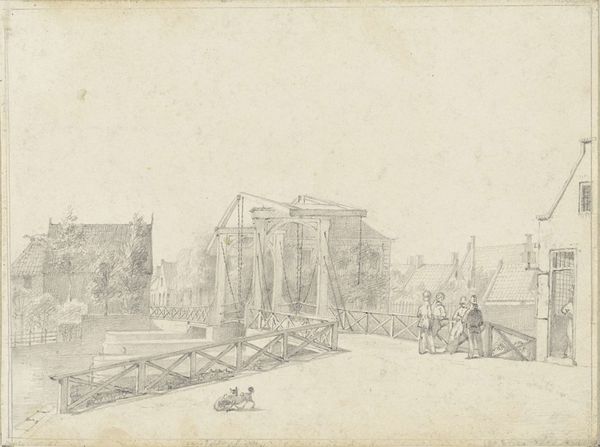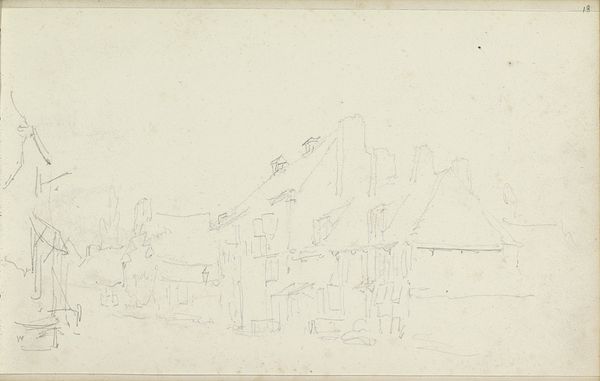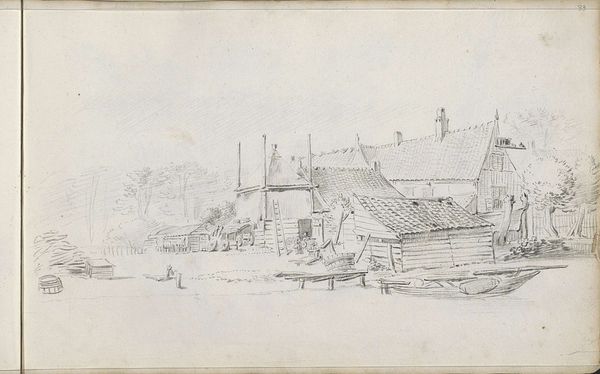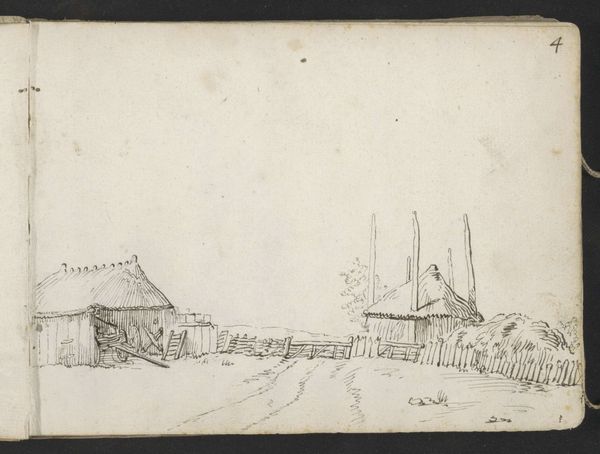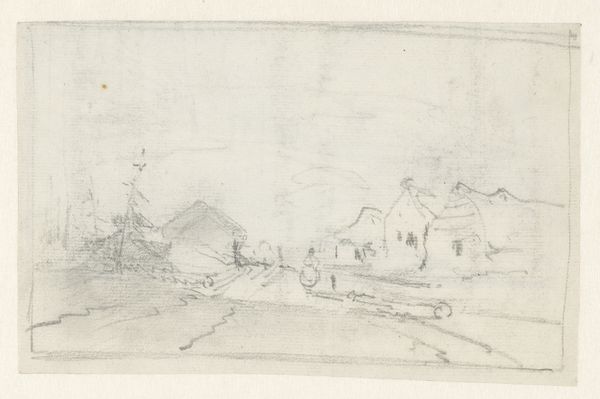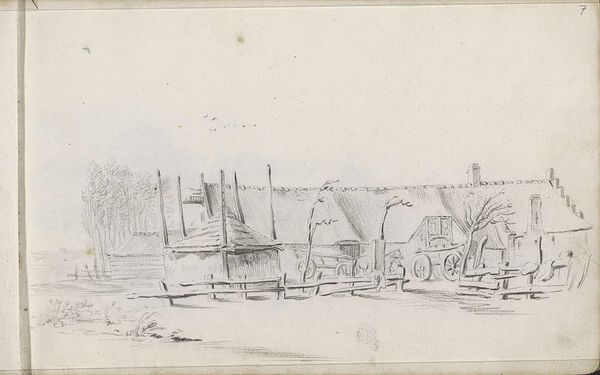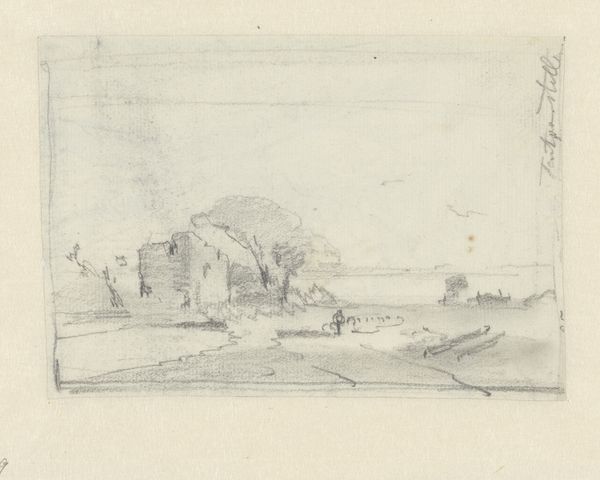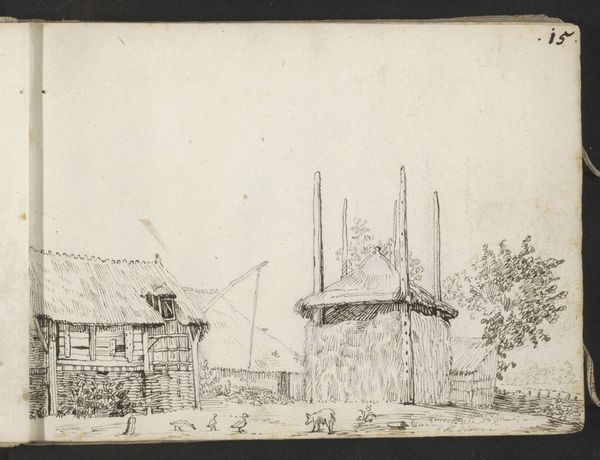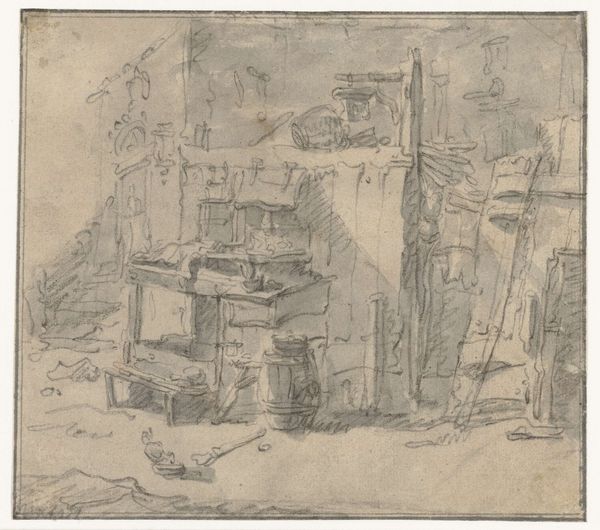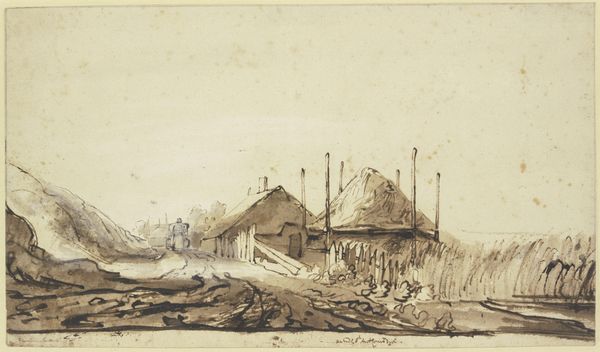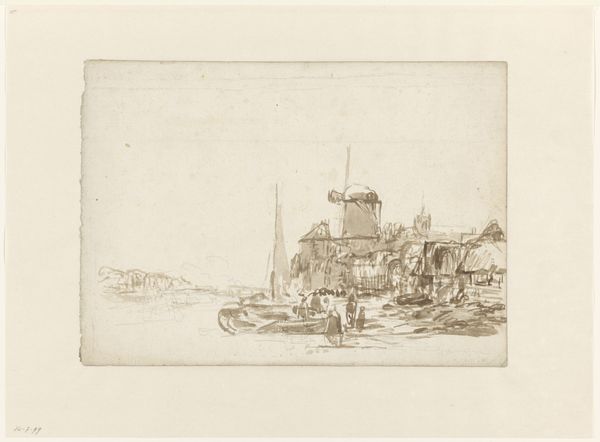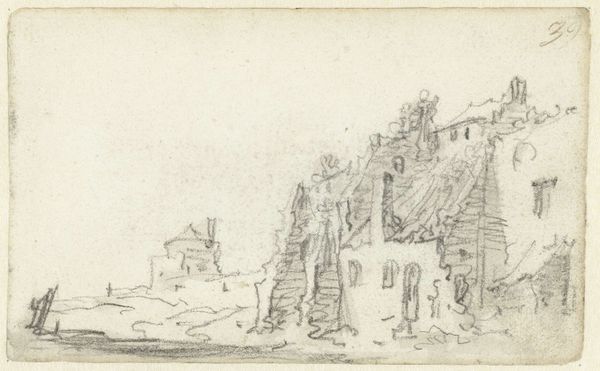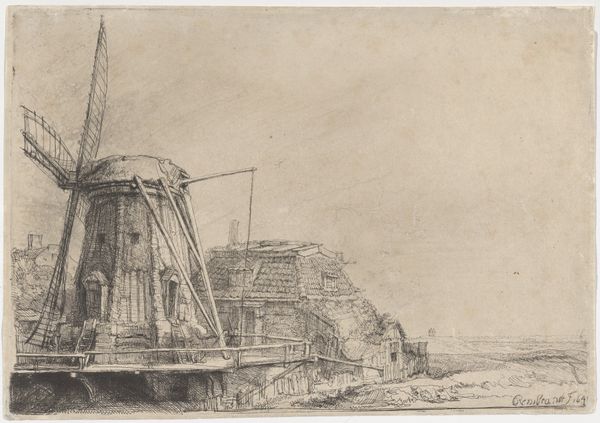
A Wooden Bridge Leading to a House Built above a River c. 1603
0:00
0:00
drawing, ink
#
drawing
#
landscape
#
11_renaissance
#
ink
#
northern-renaissance
Dimensions: height 120 mm, width 192 mm
Copyright: Rijks Museum: Open Domain
Editor: So, this is "A Wooden Bridge Leading to a House Built above a River," a pen and brown ink drawing by Paulus Willemsz. van Vianen from around 1603. The scene has this everyday, almost rustic feeling, and it's making me wonder about the lives of people back then. What’s your take on this piece? Curator: It’s a fascinating window into the Dutch landscape, isn't it? Drawings like these are not just topographical records. They offer insights into the social and economic conditions of the time. Who do you think the people living in these types of houses were? Editor: Maybe farmers or merchants? Someone reliant on the river for their livelihood? Curator: Precisely. And consider the placement of the house. Elevated above the water. What does that suggest about the relationship between the people and their environment? Editor: Well, perhaps a need to adapt to frequent flooding, showcasing a struggle and resilience? It feels different from grand history paintings—more focused on daily life. Curator: Exactly. It also reminds us that art isn’t just about celebrating power or beauty; it can be about documenting and reflecting the realities of everyday life, which arguably serves a much wider audience. This work demonstrates that even seemingly simple scenes contribute to how the Dutch Golden Age understood and constructed its national identity through art. I see documentation for historical legacy, how about you? Editor: That’s definitely an aspect I hadn't considered. Seeing art as a way to understand how communities perceive themselves shifts my understanding quite a bit. I now realize it is about daily lives and historical legacy at the same time. Thanks! Curator: Indeed. Art provides invaluable clues to our understanding of the socio-political influences from a long time ago. It also serves as a strong point in informing present day lives. A virtuous feedback loop I call it.
Comments
rijksmuseum about 2 years ago
⋮
Paulus van Vianen possessed the remarkable ability to translate his own delicately rendered landscape drawings into extraordinarily detailed chasing in silver. For example, this cottage and rickety bridge – possibly somewhere near Salzburg – appears on a silver plaquette of 1607 in the Rijksmuseum. That relief is on view in Gallery 2.3.
Join the conversation
Join millions of artists and users on Artera today and experience the ultimate creative platform.
